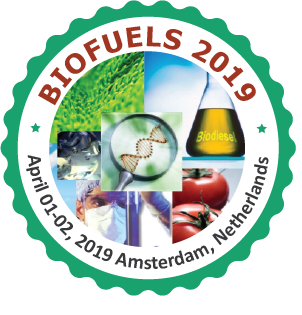
Rachel Murphy
University of Limerick, Ireland
Title: The role of turbulence in magnetically assisted biodiesel synthesis
Biography
Biography: Rachel Murphy
Abstract
Depleting fossil fuel resources and the difficulty of achieving acceptable biodiesel yields of 96.5 % (EN 14214) has resulted in the development of many experimental biodiesel reactors. One such reactor operating by the use of semi-discontinuous magnetic fields to drive magnetic elements is applied here. Experimental flow field or Reynolds’s number measurements are inaccessible in this reactor. However, the velocity of magnetic elements is related to the shear rate of the liquid and the interaction of magnetic elements is related to the interaction of local flow velocity field’s i.e. turbulent flow. The average translational velocity of a single magnetic element was measured as a function of RMS magnetic field strength; Fig. 1 displays results for up to 4 elements. Therefore, biodiesel yield was correlated with the number of mixing elements where the total kinetic energy of the system was fixed. Reactions are of short duration and are maintained at ambient temperature and so, the heat dissipated due to collisions is neglected. The translational kinetic energy then is a measure of energy dissipated per unit volume of liquid per unit time and, in theory, the smallest turbulent Eddie size decreases with decreasing liquid volume. The presence of smaller eddies reflects smaller local flow velocity but a larger velocity gradient and thus an overall increase in shear stress. This overall increase in shear stress may be confirmed using a pseudoplastic shear-thinning material in the reactor by performing a viscosity measurement immediately after mixing using a high-speed camera and applying Stroke’s equation.

